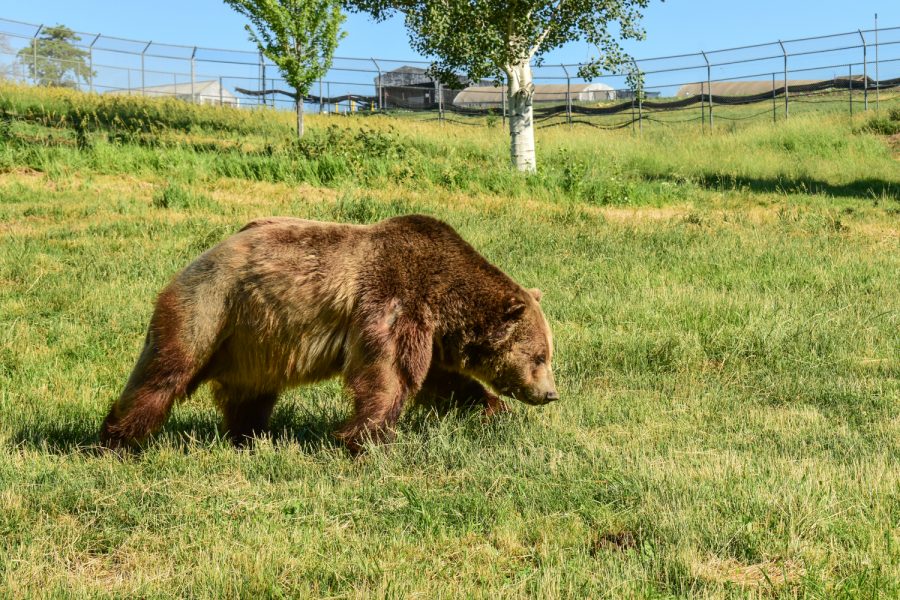WSU researchers find bear proteins may be key to human diabetes treatment
Proteins expressed at different levels during hibernation, active season; disrupting natural rhythms can lead to metabolic diseases
Joanna Kelley collected blood serum samples from both active and hibernating bears at the WSU Bear Center to measure levels of protein expression.
July 7, 2021
WSU researchers are investigating eight proteins that may be natural cues for insulin resistance in bears, which could provide new insight into human diabetes.
Bears are sensitive to insulin during their active cycle and naturally enter an insulin-resistant state when they hibernate, said Joanna Kelley, WSU School of Biological Sciences associate professor.
Insulin resistance in humans is associated with type two diabetes, she said.
“This is part of [bears’] natural annual cycle,” Kelley said, “while in humans this is not natural, this is a disease state.”
Insulin is a protein that regulates cells’ glucose uptake. When an organism is insulin resistant, glucose builds up in the blood, leading to high blood sugar.
Kelley compared blood serum samples from active and hibernating bears and found eight key proteins expressed at different levels. Applying blood serum from an active bear to cells from a hibernating bear triggered physiological changes in the cells associated with insulin sensitivity, she said.
All eight proteins have a homolog in humans, meaning they do not share the same protein sequence but are otherwise similar, she said.
One protein or any combination of the eight could be responsible for insulin resistance, Kelley said. The next step is to test individual proteins and different combinations to see which ones are associated with changing metabolic states.
Bears have both circadian and circannual rhythms — daily and yearly internal clocks — controlling their metabolic states. Humans have circadian rhythms, but there is not enough evidence to show they have circannual rhythms, said Heiko Jansen, WSU Department of Integrative Physiology and Neuroscience professor.
“It’s the cellular clocks, we call them,” Jansen said, “that make these rhythms appear in our physiology and our behavior.”
Organisms become more prone to metabolic diseases like diabetes and obesity when their circadian rhythms are disrupted, he said.
Maintaining a consistent sleep and eating cycle could protect organisms from some diseases, he said.
Bears maintain a normal sleep/wake cycle during hibernation, though it is not as evident as in the active season, Jansen said. Researchers are trying to determine if this protects bears from diabetes.
“Having a viable circadian clock,” he said, “even during hibernation, was perhaps one way to protect yourself from the negative effects of insulin resistance.”
There are many ways a bear’s physiology can change during hibernation because different body systems are impacted, Jansen said. These changes are likely caused by multiple genes.
Kelley hopes this research will eventually lead to a therapeutic treatment in humans, triggering cells to turn up production of the key protein or proteins, thereby curing diabetes.
Kelley’s research was supported by a $40,000 grant from WSU’s Cougar Cage competition. She will submit a paper in the next few weeks for publication.











